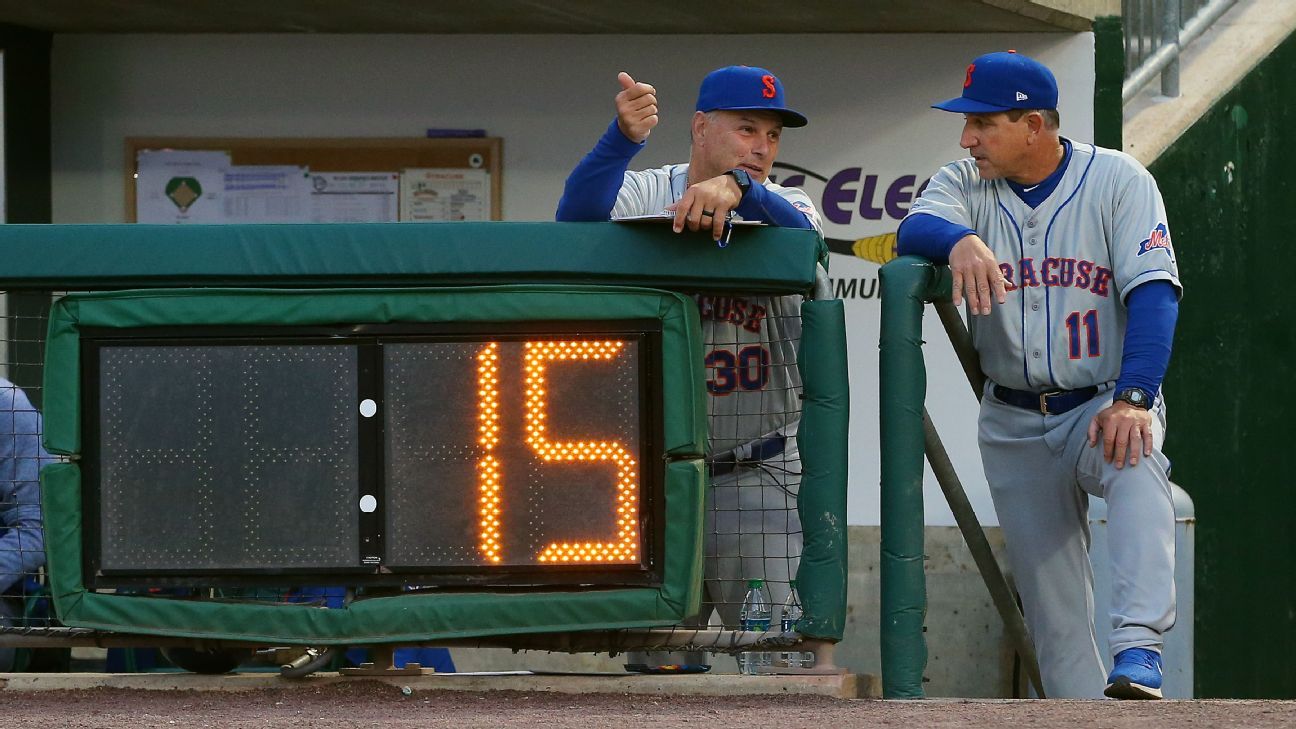NEW YORK — The robot strike zone will get slightly bigger at Triple-A starting Tuesday in an attempt to make it better reflect individual batters rather than averages, and the pitch clock will be altered, too.
The robots this season were programmed to call a two-dimensional zone based on where the ball crosses the midpoint of the plate, 8½ inches from the front and the back. MLB reduced the top of the zone to 51% of a batter’s height from 56%. The system averaged batter heights, rather than accounting for body shapes and stances.
Starting Tuesday, data for each player from the Hawk-Eye pose-tracking system of cameras installed at each ballpark will be used to set the bottom of the strike zone at an individual’s back knee for the automated ball-strike system. The top will be 5½ inches above the midpoint of the measurements of a player’s left and right hips. MLB projects that top to be one baseball above the bottom of a batter’s belt.
The change, first reported by Baseball America, was announced Thursday in a call with MLB officials and farm directors. MLB estimated the change will restore about a half-inch to the top of the strike zone from this year’s reduction.
Robot umpires are used to call balls and strikes in half of Triple-A games. A human works the plate for the other half, and teams have the right to appeal calls to the robot.
The pitch clock will be set at 17 seconds at all times, instead of 14 seconds with the bases empty and 19 seconds with runners on base. In the clock’s first use in the major leagues this year, it has been set at 15 seconds with no runners and 20 seconds with runners.
This is MLB’s first test of a uniform clock in the minors, an effort to collect data for the sport’s competition committee.
